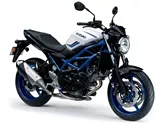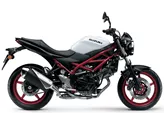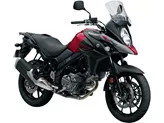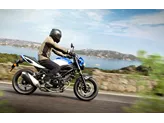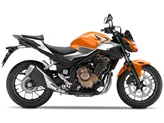Kawasaki ER-6n 2011 vs. Suzuki SV 650 2016

Kawasaki ER-6n 2011

Suzuki SV 650 2016
Overview - Kawasaki ER-6n 2011 vs Suzuki SV 650 2016
The Kawasaki ER-6n model year 2011 and the Suzuki SV 650 model year 2016 are both naked bikes with similar technical specifications. Both bikes have a 2-cylinder engine with liquid cooling and a displacement of around 650cc. They also have a monoshock rear suspension and a steel frame. The front brakes on both bikes are double disk with double piston calipers. The front and rear tire widths are also the same at 120mm and 160mm respectively.
In terms of engine power, the Suzuki SV 650 2016 has a slight advantage with 76 HP compared to the Kawasaki ER-6n 2011's 72 HP. However, the torque output is slightly higher on the Kawasaki ER-6n with 66 Nm compared to the Suzuki SV 650's 64 Nm. Both bikes have a comfortable seating position, with the Kawasaki ER-6n having a seat height of 790mm and the Suzuki SV 650 having a slightly lower seat height of 785mm.

Kawasaki ER-6n 2011
One of the strengths of the Kawasaki ER-6n 2011 is its ABS system, which provides added safety during braking. It also has wider handlebars and a slimmer waist, making it easier to maneuver in tight spaces. The increased intake noise adds to the overall riding experience. The seat on the Kawasaki ER-6n is comfortable, allowing for longer rides without discomfort. The chassis of the bike is uncomplicated, making it easy to maintain and repair.
On the other hand, the Suzuki SV 650 2016 has its own set of strengths. It has an agile and powerful engine, with a typical V2 sound that adds to the overall riding experience. The seating position is low and pleasant, making it comfortable for riders of different heights. The bike also has easy handling, allowing for effortless maneuvering in various riding conditions. The chassis of the Suzuki SV 650 is also comfortable, providing a smooth and stable ride. The brakes on the bike have good control, allowing for precise stopping power.

Suzuki SV 650 2016
One weakness of the Suzuki SV 650 2016 is the poorly readable digital tachometer. This may make it difficult for riders to accurately monitor their engine RPMs while riding.
In summary, both the Kawasaki ER-6n 2011 and the Suzuki SV 650 2016 are solid naked bikes with similar technical specifications. While the Suzuki SV 650 has a slightly more powerful engine, the Kawasaki ER-6n offers the advantage of ABS and a more comfortable seat. Ultimately, the choice between the two would depend on the individual rider's preferences and priorities.
Technical Specifications Kawasaki ER-6n 2011 compared to Suzuki SV 650 2016
Pros and Cons in comparison
Pros and Cons in comparison
Kawasaki ER-6n 2011

You won't find such a coherent package with such fine details anywhere else at this price. The ER-6n has become a little sharper again, both visually and dynamically, and is more fun than ever.
Suzuki SV 650 2016

The new SV650 continues the visual minimalism of the first two SV650 generations, but builds technically on its direct predecessor, the SFV650 Gladius - two excellent moves that turn the very modern SV650 into a classic. The design fits wonderfully into the era of many retro conversions, but inside there are also modern gimmicks that make it easier for beginners in particular to get started. The engine, on the other hand, can also convince advanced riders; the typical V2 feeling is wonderful. You shouldn't expect extreme sportiness in the chassis and brakes, but the price of just under 6400 euros (in Germany) is a statement that the competition will have to swallow.
Price Comparison Avarage Market Price Kawasaki ER-6n vs Suzuki SV 650
There are a few key differences between a Kawasaki ER-6n 2011 and a Suzuki SV 650 2016. In terms of price, the actual average price of a Suzuki SV 650 2016 is about 41% higher. A Kawasaki ER-6n 2011 experiences a loss of 230 USD in one year and 500 USD in two years of ownership. This is offset by a loss of 140 USD and 140 USD for a Suzuki SV 650 2016. Compared to Suzuki SV 650 2016 there are less Kawasaki ER-6n 2011 bikes available on the 1000PS.de Marketplace, specifically 5 compared to 11. It takes less time to sell a Kawasaki ER-6n with 49 days compared to 80 days for a Suzuki SV 650. Since model year 2006 1000PS.de editors have written 16 reviews for the Kawasaki ER-6n and 25 reviews for the Suzuki SV 650 since model year 2005. The first review for the Kawasaki ER-6n was published on 6/29/2005 and now has more than 11,200 views. This compares to more than 14,200 views for the first review on Suzuki SV 650 published on 9/26/2008.










